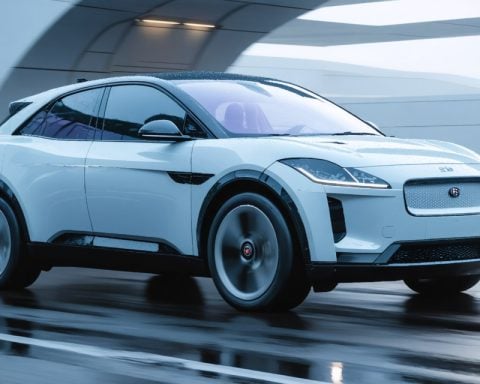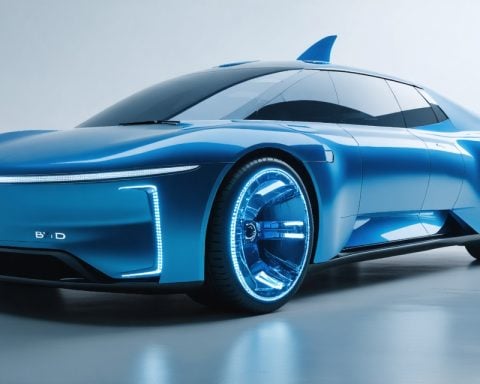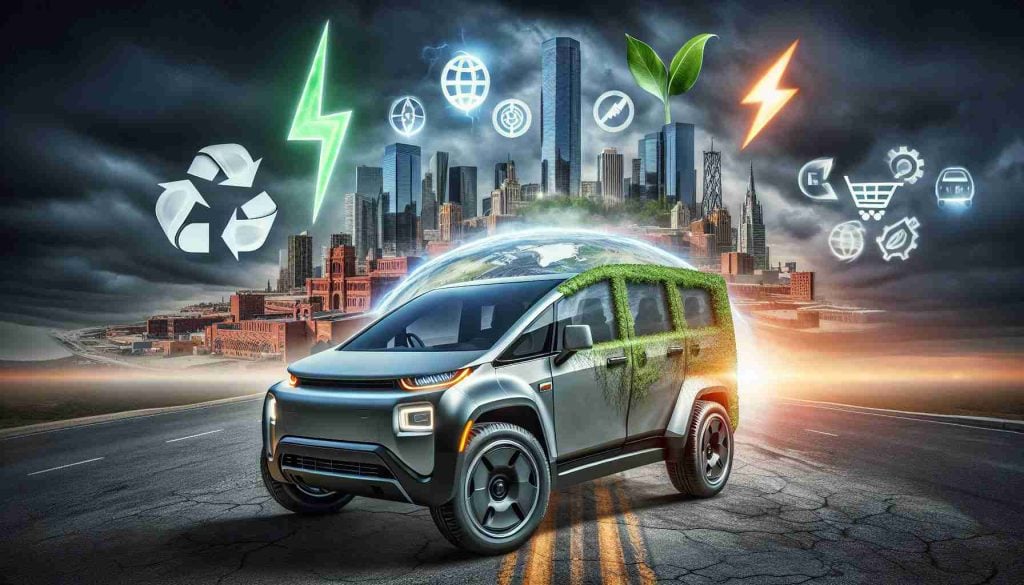- Larger electric vehicles (EVs) paradoxically increase environmental burdens despite being marketed as eco-friendly solutions.
- Significant resource consumption by models like the GMC Hummer EV and Tesla Cybertruck negates potential emission reductions.
- Large EVs consume 75% more critical minerals and increase carbon emissions by 70% compared to smaller or traditional vehicles.
- Consumer preferences for large SUVs boost demand for resource-intensive EV models.
- The International Energy Agency reports most EVs fall into the “large vehicle and SUV” category, emphasizing the trend.
- The full environmental impact of EVs stems from energy-intensive battery production, often overlooked in efficiency ratings.
- A reassessment of vehicle size may be essential for achieving genuine sustainability in the EV sector.
As the hum of electric vehicles fills the air, a paradox emerges on roads worldwide: the larger the EV, the greater the environmental burden. Once touted as eco-friendly saviors, electric cars aimed to slash pollution and cut ownership costs. Yet, today’s larger models, with their colossal battery demands, tell a different story.
Imagine the gleaming monstrosity of a GMC Hummer EV or a Tesla Cybertruck. These are not just cars; they are mobile powerhouses consuming more resources than they promise to save. According to insights from a recent analysis, these large-format electric giants not only fail to significantly reduce greenhouse gas emissions compared to their fossil-fuel predecessors, but they also gobble up 75% more critical minerals. The process of creating these energy behemoths cranks carbon emissions up by 70%, compared to smaller or traditional vehicles.
The allure of hefty vehicles leads to larger battery packs, which silently mock their environmental mission. This is exacerbated by consumer trends favoring robust SUVs, a preference that fuels the demand for such resource-intense models. An analysis by the International Energy Agency reveals most electric vehicle models are part of the “large vehicles and SUV” class, underscoring this trend.
The real energy equation is often hidden from view. While new vehicle stickers boast impressive efficiency ratings, they overlook the energy-devouring pipeline from mining to manufacturing those massive lithium-ion batteries. It’s a stark reminder: what’s beneath the surface of these technological marvels may not align with their promised eco-friendly virtue.
As electric vehicles continue to evolve, it’s crucial to reconsider our obsession with size. The real path to sustainability may require scaling back rather than ramping up.
Why Bigger Isn’t Always Better: Unveiling the Environmental Cost of Large Electric Vehicles
How-To Steps & Life Hacks: Choosing Sustainable EVs
1. Research Battery Technology: Before purchasing, investigate the battery’s type and capacity. Smaller, more efficient batteries typically have a lower environmental impact.
2. Evaluate Total Cost of Ownership: Include factors like electricity rates, maintenance, and the resale value. Smaller EVs often have lower running costs.
3. Consider Alternative Transport Options: If possible, optimize your carbon footprint by utilizing public transport or car-sharing services.
4. Stay Informed About Charging Stations: An efficient network of charging stations can influence the practicality and environmental impact of owning an EV.
Real-World Use Cases
Smaller electric vehicles like the Nissan Leaf or the Chevrolet Bolt offer a viable alternative for urban commuters, with efficient energy consumption for shorter distances.
Market Forecasts & Industry Trends
The global electric vehicle market is projected to grow significantly, yet there’s a distinct pivot towards developing smaller, more energy-efficient models. According to the International Energy Agency, increased regulatory pressures are likely to steer the market towards more sustainable practices, favoring compact and mid-sized vehicles.
Reviews & Comparisons
– Tesla Model Y vs. Chevy Bolt: While the Model Y offers performance and range, the Chevy Bolt excels in affordability and lower environmental impact due to its smaller battery and lighter structure.
– Ford Mustang Mach-E vs. Hyundai Kona Electric: Both provide utility, but the Kona Electric is praised for its efficiency and lower overall environmental cost.
Controversies & Limitations
Larger EVs remain controversial due to their significant demand for materials like lithium and cobalt, which drive environmental and ethical issues in mining.
Features, Specs & Pricing
– Tesla Cybertruck: Starting price around $39,900, with a range exceeding 250 miles on its base model. Features include robust off-road capabilities but significant emissions in manufacturing stage.
– GMC Hummer EV: Prices begin at approximately $86,000. It boasts over 350 miles of range and immense power but requires massive amounts of resources.
Security & Sustainability
While EVs offer security features inherent to their build, sustainability is a concern, notably in the lifecycle emissions, reusability of components, and end-of-life battery recycling.
Insights & Predictions
Given current trends, we can anticipate a shift towards more sustainable electric mobility solutions. Industry leaders may look to innovate more with solid-state batteries, which promise greater energy density and lower environmental impacts.
Tutorials & Compatibility
For users looking to make their EVs more efficient, adopting driving habits like regenerative braking, reducing excess weight, and ensuring proper tire inflation can make sizable efficiency differences.
Pros & Cons Overview
Pros of Large EVs:
– High performance and range.
– Ample interior and cargo space.
Cons of Large EVs:
– High environmental cost in production.
– Greater energy consumption.
– Increased mining of finite resources.
Conclusions and Quick Tips
The move towards electric vehicles does not necessarily translate into eco-friendliness when larger models are pursued. To minimize environmental impact:
– Opt for smaller EV models when possible.
– Stay informed on advancements in battery technology.
– Prioritize sustainable practices and vehicle sharing.
For further insights into transitioning to an electric vehicle future, readers can visit the International Energy Agency for comprehensive resources on energy and transportation trends.
















